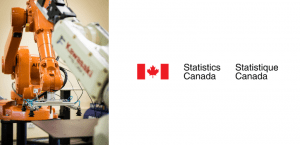By Josh White
Vancouver, British Columbia — June 23, 2017 — Are your hiring practices reactive or proactive? Annabelle Cormack, President of Cormack Recruitment, believes that proactive hiring is the best way to stay on top of your work.
Cormack and her team partner with employers in several industries to source and acquire employees to fill job vacancies. Cormack’s experience with recruitment has given her insight to the issues of reactive hiring within the industry and how to solve them. Collision Community is pleased to share Cormack’s tactics for proactive hiring including planning and anticipation, networking, and maintaining the momentum of pro-active recruitment.
“Many of the businesses in collision repair think they are unique in their inability to find talent. I explain to them that they are not unique at all,” says Cormack. “Recruitment is challenging no matter what sector, position or geographic area.” In the auto collision sector, some of the common recruiting obstacles are limited qualified candidates, lower post-secondary enrolment and differences in work ethic in a multi-generational workforce. This however, does not have to spell futility for hiring new employees.
Reactive hiring results from unexpected and unplanned employee turnover. This occurs when an employee leaves for any number of reasons, sending the employer into “panic mode” trying to fill their position. Proactive hiring on the other hand, is based on anticipating and planning for vacancies that will occur for known reasons and at the same time, reduces the panic for unexpected turnover for those surprise situations. By being proactive, the employer has a better chance of filling vacancies more easily and in shorter periods of time. Cormack told Collision Repair magazine, “Proactive recruitment must be a part of an employer’s mindset on a daily basis, not just when surprises occur.”
Shops can engage in proactive recruitment using several strategies and tactics. This article will focus on the need to plan and anticipate. Hiring may need to occur for a variety of reasons. In addition to voluntary leave, there are several other factors to consider such as retirement, business growth, vacation coverage, leaves of absence, or finding a successor. When these factors are kept in mind, employers can anticipate the need to recruit, hire, and determine a strategy in how they will source and hire new employees in a given time line.
Typically, companies experience an employee voluntary/involuntary turnover rate of 7.5 percent per year. This figure does not include other causes for turnover, so it’s fair to say that to anticipate a turnover of up to 10 percent isn’t unreasonable. Whatever the reason for turnover, it is important for the employer to always be prepared and remain proactive in their approach to developing a talent pool from which to draw in the future. “Employers cannot anticipate when involuntary turnover will happen, but if they anticipate a 7-10 percent turnover rate per year, they can plan for it,” says Cormack. This is known as workforce planning, and it is the first step to moving towards proactive hiring.
Once employers anticipate their hiring needs, they can look to the next steps and options that support proactive recruitment to fill vacancies easier and more quickly.
Cormack will be presenting at the CCIF in Edmonton this Fall. For more information on Cormack Recruitment, please visit cormackrecruitment.com.















